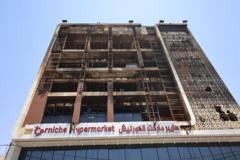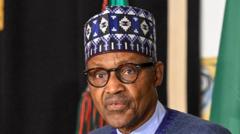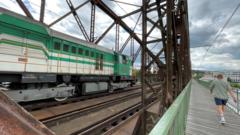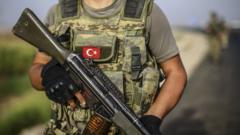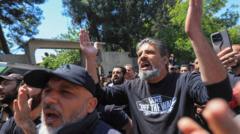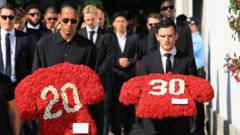Eight years post-liberation, the reconstruction of Mosul showcases the rebirth of community spirits and cultural heritage after the devastating rule of ISIS.
**Mosul Annual Revitalization: A Historic Rebirth Post-IS Occupation**
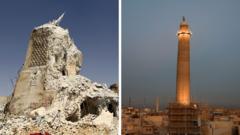
**Mosul Annual Revitalization: A Historic Rebirth Post-IS Occupation**
Unesco's efforts have led to the reopening of essential landmarks in Mosul, symbolizing resilience and cultural restoration in a city long scarred by conflict.
Historic sites in Mosul are once again accessible to the public thanks to an ambitious restoration project initiated by Unesco following the city's liberation from extremist control in 2017. This initiative, attended by both Unesco's director-general Audrey Azoulay and Iraqi Prime Minister Mohammed Shia' al-Sudani, signifies a monumental step towards rebuilding the diverse cultural fabric of Mosul that was torn apart during the Islamic State's reign.
When ISIS seized Mosul in 2014, it not only imposed terror but also unleashed destruction on the city's cherished landmarks, including churches and mosques. The battles to reclaim this northern Iraqi city were brutal, culminating in a US-backed coalition's intense offensive that ultimately liberated Mosul. The impact of these battles was catastrophic: approximately 80% of the Old City suffered devastation, shattering the architectural beauty that had long defined it.
Local photographer Ali al-Baroodi recalls the haunting aftermath of the siege. Upon entering Mosul after the fighting ceased, he was confronted with a devastating sight—the once proudly leaning al-Hadba minaret, a centuries-old icon of the city, was reduced to ruins. "It was a ghost town," he described, sharing the trauma of witnessing the once-vibrant landscape transformed into a scene of desolation.
Now, thanks to the restoration efforts managed by Unesco, a significant portion of the damage has been reversed. Financial backing totalling $115 million has come from various sources, including the United Arab Emirates and the European Union, aimed at revitalizing both infrastructure and community ties. Notably, the reconstruction of the al-Saa'a Convent is emblematic of the collaborative effort to restore places of worship for various faiths, as well as to foster relationships among different community groups.
Dominican priest Father Olivier Poquillon highlighted the importance of rebuilding trust among Mosul’s diverse populations to prevent future discord, stating, "If you want to rebuild the buildings you've got first to rebuild trust." His initiative included local artisans, bringing various religious denominational members together to collectively restore the damaged sites.
Unesco's chief architect, Maria Rita Acetoso, described the broader implications of the project, noting that heritage restoration has created jobs and facilitated skills development among local youths, many of whom are training in traditional crafts. Acetoso emphasizes that such projects are critical to restoring hope for younger generations growing up in the shadows of conflict.
With the restoration of sites like the al-Tahera Church and the al-Hadba minaret, Mosul's historic skyline is slowly returning to its former splendor. Local residents like Mustafa and Abdullah express their joy and relief as they move back into their homes, which hold deep familial significance. Abdullah remarked on the rediscovery of his heritage, asserting, "I can't describe the feeling I had because after seeing all the destruction... I thought I would never be able to come back."
While the scars of war remain, the sight of renewed life and the sound of ringing church bells signal an inspiring resurgence for Mosul. As the city gradually heals from its tumultuous past, photographer Ali al-Baroodi poetically encapsulates the sentiment: "It's truly like seeing a dead person coming back to life... the true spirit of the city coming back to life."


